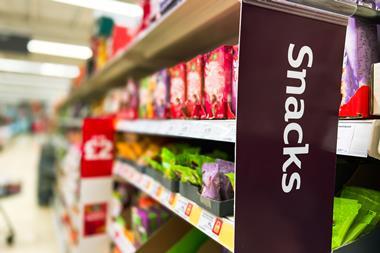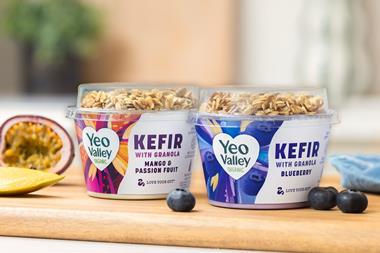
The restrictions on HFSS products in prominent store locations also applies to “the equivalent key locations online”. Just as products can’t be positioned too close to a store entrance, nor can they appear on a supermarket’s homepage – at least not with the option to directly add the item to an online basket. It means that retailers can legally put an image of chocolates on the homepage to take shoppers to the confectionery pages of a website, but that’s as far as it can go.
HFSS foods are also banned from any page not opened intentionally by the consumer (a pop-up or ‘brand burst’ for example). Nor can they feature on a favourites page like a ‘recommended for you’, unless the consumer has previously purchased it in a store or online or “intentionally identified” it as a favourite product.
The restrictions apply at every point of the online path to purchase, practically gutting websites of any opportunity to prompt an impulse HFSS purchase.
Not that it will make much difference to sales, says consumer behaviour psychologist Phillip Adcock. According to his research, three quarters of online grocery shoppers simply reorder the same baskets each shop.
“People don’t look for items anew each time,” Adcock says. “When it comes to shopping online it’s a much more orderly stock replenishment mission rather than an amble round Tesco,” he says.
“An awful lot of sweet treats are bought for immediate gratification. One thing online can’t do, is satisfy a sugar rush there and then,” he adds. “Impulse purchases? It’s not the same online, it’s about repeat basket purchases.”
All in all, the online changes will have been far less disruptive than supermarket in-store adjustments, explains Charles Allen, senior retail analyst at Bloomberg Intelligence. In most cases, simply re-coding the website has ensured HFSS products don’t get displayed where they shouldn’t.
“It is likely that Ocado and other online grocers have had to check the algorithms on their websites to make sure that HFSS products don’t appear as recommendations for shoppers,” Allen says, “but equally this was probably done quite a while ago as these regulations have been long planned.”
When it comes to packing orders, some operational changes may be required. On substitutions, the legislation specifies these “can only be made if the product suggested as a substitute is a homogenous product and not a variation”. In other words, an HFSS product can’t substitute a non-HFSS one. But similarly these are chiefly coding changes that feed suggestions to pickers’ handsets.
In any case, online grocery sales are receding from their pandemic peaks. In its latest results, Tesco reported shoppers were “switching back to stores” with like-for-like sales down 11% on the previous year.
“Generally, shoppers are drifting away from online, which is typically a large basket shop, in favour of more frequent trips to stores,” Allen says. “This is a more immediate challenge for online-only grocers. Supermarkets with online arms can more easily manage the switch back to stores.”
Adcock suspects minimal impact. “I don’t think HFSS will have much of an issue with these changes, because these sorts of products don’t do well online anyway.”
Everything you need to know about HFSS but were afraid to ask
- 1
- 2
- 3
- 4
- 5
- 6
 Currently reading
Currently readingHow re-coding has made sticking to HFSS rules simpler online
- 7
- 8
- 9



























No comments yet